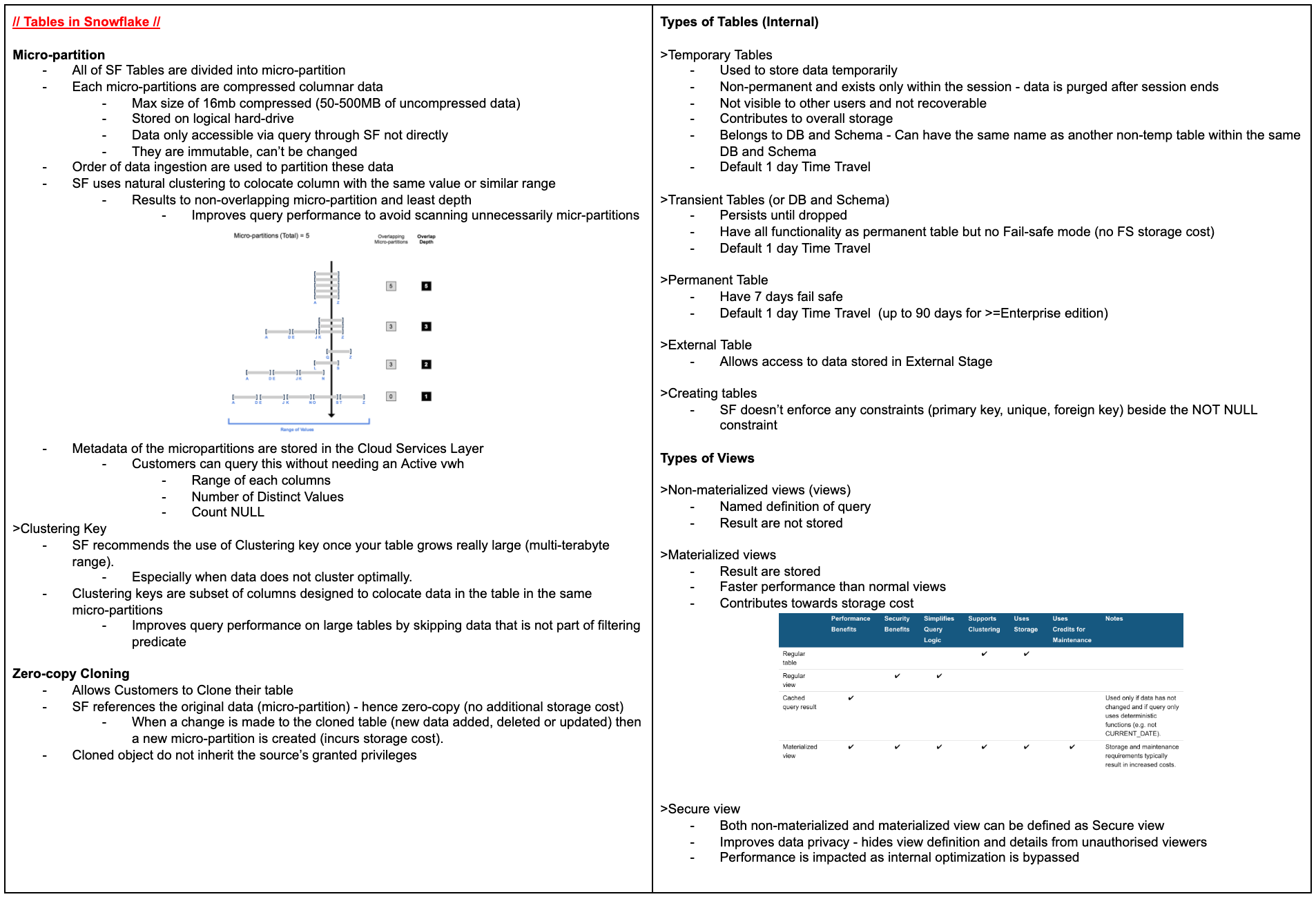

Next, the services layer sends query execution instructions to the virtual warehouse, which allocates resources because any needed data from the storage layer can execute the query.

To know how the different layers work together, let's understand the lifecycle of a query.Īfter connecting the Snowflake through one of the supported clients and starting a session, the first virtual warehouse submits a query and services layer verifies the authorized access data in the database, and later executes the operations defined in the query, and then creates an optimized query plan. Services in this layer include:īy design, all these layers are independently scaled and are redundant.
#Snowflake pro reviews manual#
It eliminates the manual data warehousing and tuning requirement. The services layer coordinates and handles all other services in Snowflake, including sessions, encryption, SQL compilation, and more. A virtual warehouse can be scaled up or down without any downtime or destruction. Virtual Warehouses are actually used for the purpose of data loading or running queries and are capable of doing both of these tasks simultaneously. Snowflake processes the queries using cs, where each virtual warehouse(or cluster) can obtain all the data in the storage layer, then run separately, so the warehouses do not share or compete for compute resources. The underlying filesystem in Snowflake is managed by S3 in Snowflake's account, where data is encrypted, compressed, and distributed to optimize the performance. We can store any kind of structured or semi-structured data in Snowflake, and all the tasks related to data are handled through SQL query operations. A database is a logical grouping of objects, consisting primarily of tables and views, classified into one or more schemas. Snowflake processes the queries using MPP (massively parallel processing) compute clusters, where each node in the cluster stores part of the entire dataset locally.Īrchitecturally, the snowflake data warehouse consists of three key layers: Snowflake combines the benefits of both platforms in an innovative and new design. Shared disk architectures use multiple nodes for accessing shared data on a single storage system, and the Shared nothing architectures store a part of data in each node of the data warehouse.

Let's understand how Snowflake differs from other traditional architectures.

Snowflake features compute, storage, and global service layers which are physically separated but logically integrated. It handles all aspects of authentication, resource management, optimization, data protection, configuration, availability, and more. Its unique multi-cluster shared data architecture delivers the performance, concurrency, and elasticity that organizations require. Snowflake architecture is built for the cloud. Let's move ahead and learn about Snowflake architecture. Want to enhance your skills to become a master in Snowflake Certification, Enroll in our Snowflake Certification Course But what makes it unbeatable is its architecture and data sharing capabilities. It's ideal for data warehousing, data engineering, data lakes, data science, and developing data applications.
#Snowflake pro reviews software#
There is no hardware (virtual or physical) or software needed to install, configure, and manage, entirely runs on public cloud infrastructure. It can run on popular providers like AWS, Azure, and Google cloud platforms. Snowflake is the first analytics database built with the cloud and delivered as a data warehouse as a service. Let us begin with the Snowflake data warehouse first, which I am going to talk about in the section below. Snowflake Tutorial - A Beginners Guide to Learn Data Warehousing Snowflake Cloud Data Warehouse Benefits.In this Snowflake Tutorial, I will be discussing the following topics: With its unique features, it soon became a leader in data management solutions for analytics. In contrast with traditional data warehouse solutions, Snowflake provides a data warehouse which is faster, easy to set up, and far more flexible. Snowflake is a cloud-based data warehousing platform that is built on top of AWS and is a true SaaS offering.


 0 kommentar(er)
0 kommentar(er)
